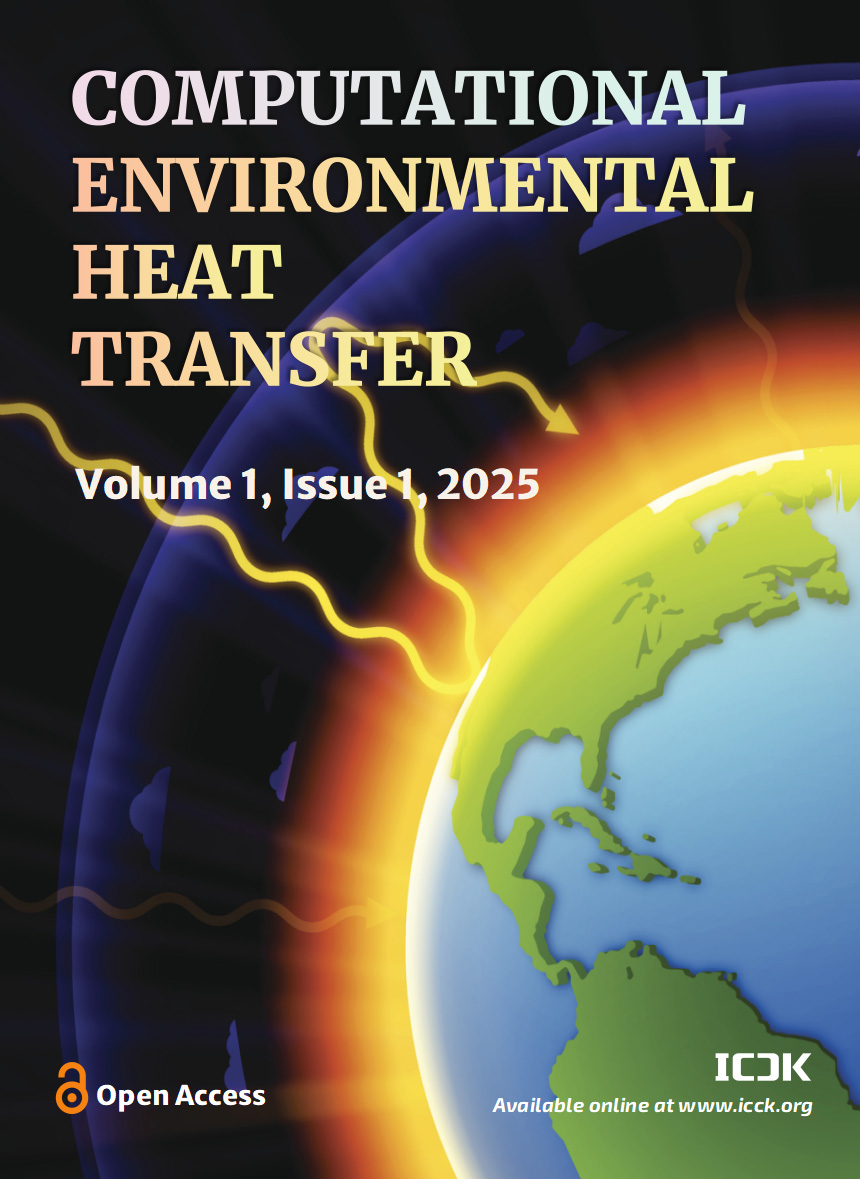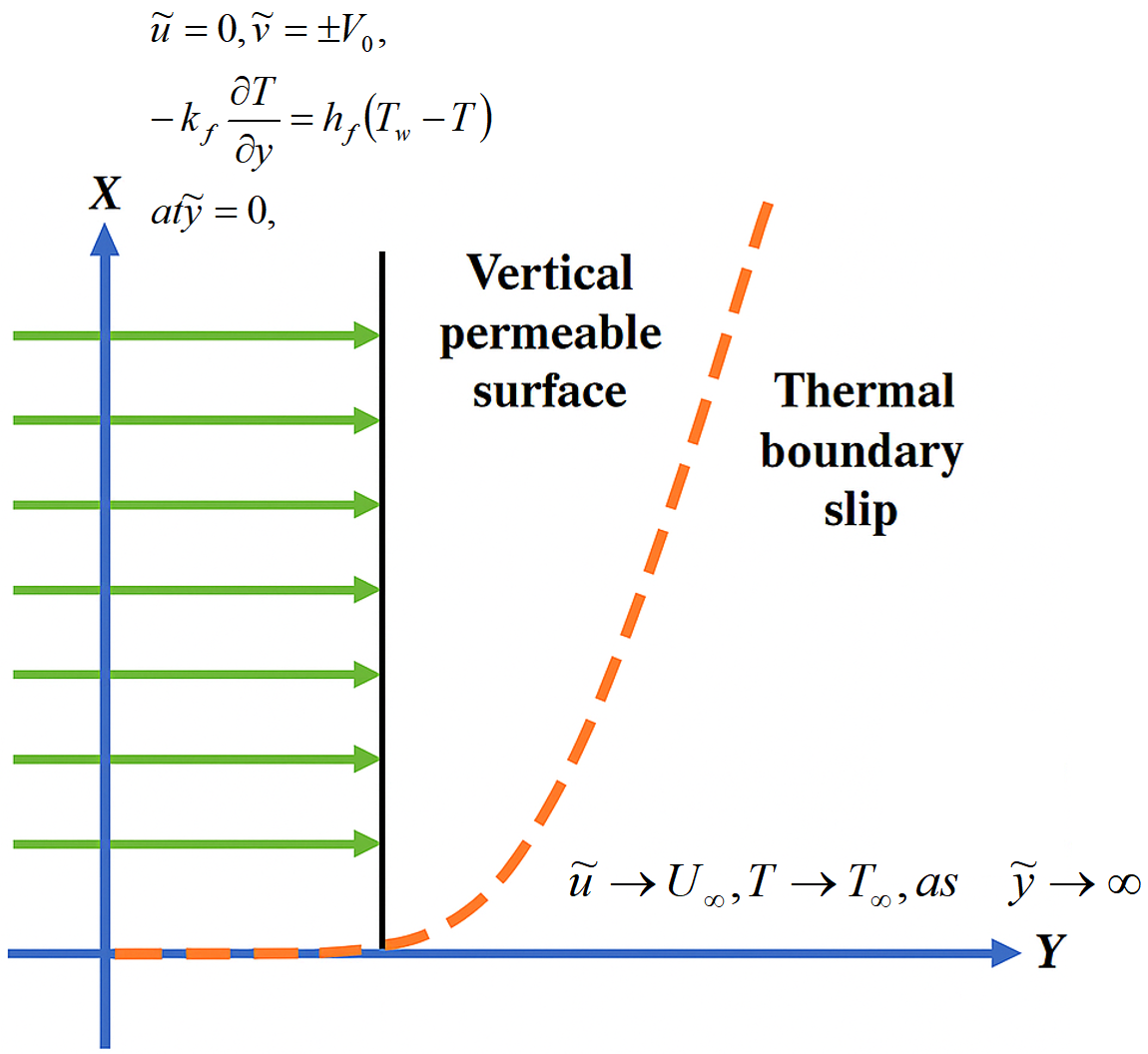Abstract
The class of fluid known as hybrid nanofluid has numerous engineering applications in the thermal industry. This study is focused on the heat transmission of the hybrid nanofluid adjacent to a vertical permeable surface by incorporating thermal boundary slip. To support this analysis, a mathematical framework has been established, presenting the problem in terms of coupled nonlinear partial differential equations. These equations have been transformed into a system of dimensionless partial differential equations using appropriate dimensionless variables. Furthermore, the finite difference technique has been employed to obtain the appropriate results. The effects of various dimensionless engineering physical parameters related to hybrid nanofluids have been examined in terms of heat transient rate, coefficient of skin friction, velocity, and temperature profiles. The findings are summarized in both graphical and tabular formats. It is keenly observed that, as the numeric values of transpiration parameter (xi_i) rise, the inclusion of thermal boundary slip leads to an augmentation of velocity and thermal profile at the surface under the effects of both suction and injection. However, an enhancement in the Prandtl number (P_r) results in a decline in velocity profile and an improvement in temperature distribution for both suction and injection.
Keywords
hybrid nanofluid
permeable surface
thermal boundary slip
finite difference technique
Data Availability Statement
Data will be made available on request.
Funding
This work was supported without any funding.
Conflicts of Interest
The authors declare no conflicts of interest.
Ethical Approval and Consent to Participate
Not applicable.
Cite This Article
APA Style
Ahmad, U., & Jafri, K. (2025). Hybrid Nanofluid Heat Transfer Adjacent to Vertical Permeable Surface in the Presence of Thermal Boundary Slip. Computational Environmental Heat Transfer, 1(1), 39–50. https://doi.org/10.62762/CEHT.2025.611372
Publisher's Note
ICCK stays neutral with regard to jurisdictional claims in published maps and institutional affiliations.
Rights and Permissions

Copyright © 2025 by the Author(s). Published by Institute of Central Computation and Knowledge. This article is an open access article distributed under the terms and conditions of the Creative Commons Attribution (CC BY) license (
https://creativecommons.org/licenses/by/4.0/), which permits use, sharing, adaptation, distribution and reproduction in any medium or format, as long as you give appropriate credit to the original author(s) and the source, provide a link to the Creative Commons licence, and indicate if changes were made.


 Submit Manuscript
Edit a Special Issue
Submit Manuscript
Edit a Special Issue

 Copyright © 2025 by the Author(s). Published by Institute of Central Computation and Knowledge. This article is an open access article distributed under the terms and conditions of the Creative Commons Attribution (CC BY) license (https://creativecommons.org/licenses/by/4.0/), which permits use, sharing, adaptation, distribution and reproduction in any medium or format, as long as you give appropriate credit to the original author(s) and the source, provide a link to the Creative Commons licence, and indicate if changes were made.
Copyright © 2025 by the Author(s). Published by Institute of Central Computation and Knowledge. This article is an open access article distributed under the terms and conditions of the Creative Commons Attribution (CC BY) license (https://creativecommons.org/licenses/by/4.0/), which permits use, sharing, adaptation, distribution and reproduction in any medium or format, as long as you give appropriate credit to the original author(s) and the source, provide a link to the Creative Commons licence, and indicate if changes were made. 